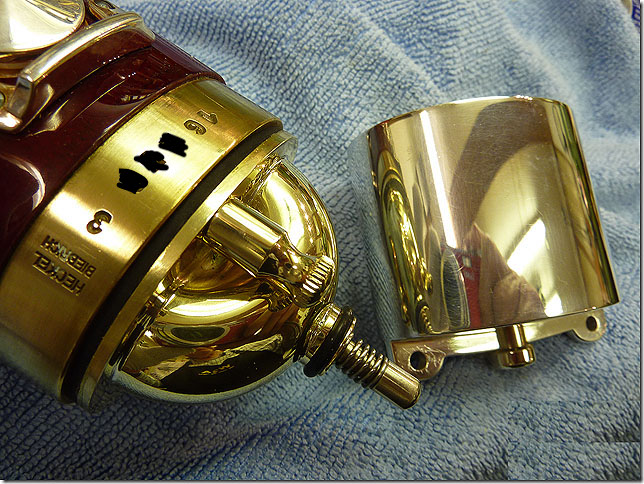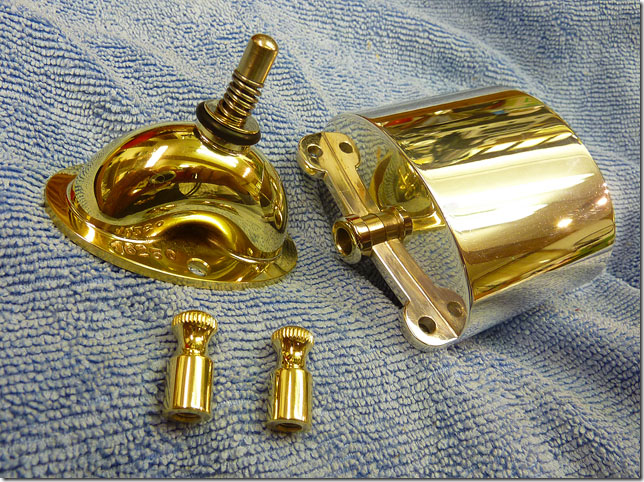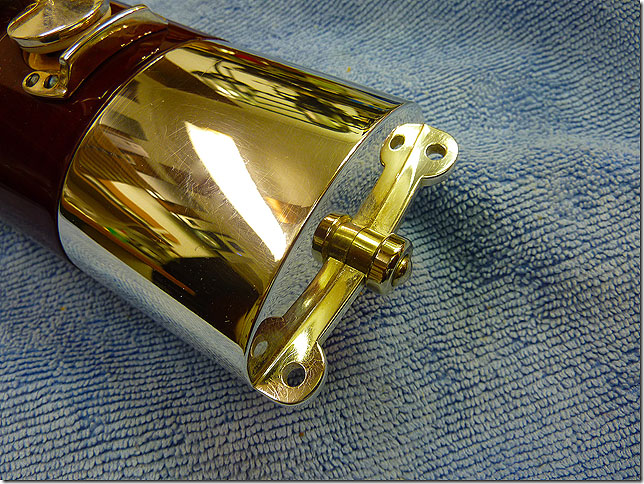I have always found musical instruments fascinating. The precision and engineering of the mechanics, combined with the beauty and flowing lines of the keywork, every aspect of an instruments design has a history. It was no surprise then that when an unusual bassoon modification crossed my bench recently, I just had to find out more about it.
The instrument was a delightful Fox Model II made in 1984. It had been lovingly packed by it’s owner, who had posted it to me for some work. As I eagerly opened up the case, the distinctive deep maroon hue of a Fox bassoon greeted me, however there was something a little different about this bassoon. Poking out from the bottom of its boot cap, were the beginnings of a water spit valve system. I had heard of this modification before, however, up until now, I never had the pleasure of exploring one close up. I dove right in.
The gadget was an elegantly designed system, a spring-loaded valve-stem opening a machined valve seat and with a rubber O-ring gasket all attached to the U-tube, sealing in a cup set into the boot cap. The U-bend and bassoon bore looked remarkably clean for an older instrument, the usually dark, blotchy, discolouration and copper green flakes were minimal, the device (and its owner of course) had clearly done their job keeping this baby dry. So who was the inventor, and how did they come about designing this interesting modification?
I decided to contact John Cran, an Australian Bassoon national treasure, a true encyclopaedia of knowledge and an owner of a similar valve design on his instrument.
Dear Tanya,
The water valve is actually a Heckel design and I was the first person in Australia to order one of these and also lined finger holes. Regarding the finger holes, players worldwide resisted these at first saying they would change the tone or response of the instrument (!) now of course every maker uses them.
I sold my first Heckel to Martin Foster and he redesigned the water valve to the form used now. Originally when the valve opened it drained into the boot cap and then outside, which was ok but was rather messy in the cap. Martin used water proof seals to isolate the cap and direct the water out while keeping the inside of the cap dry. This required a bit of clever engineering and works very well. This is a feature that I couldn’t live without as it helps to keep the lower bore from getting too wet which as you will be aware is a very vulnerable point for wood rot. I tend to get a lot of condensation so I find it very useful. As the water drains out as soon as you put the instrument down you can safely lay your instrument across a chair instead of having to find somewhere to lean it upright during the break.
So the design you see is unique to Australia as it is a Martin Foster exclusive. He is a clever chap and the man to see for any really demanding engineering problem.
Martin Foster hey, Sydney Symphony Orchestra’s former Contra Bassoonist and another member of the Australian bassoon alumni. A clockmaker by trade, his skills and high precision workshop was perfect for any complicated bassoon engineering endeavor. I got in touch with Martin to get a little more information about how and why he went about designing it.
Hello Tanya,
Yes, I did design and fit these to many, many bassoons from about 50 years ago – and the long term benefits are spectacular. If you have a look at the large bore of the instrument after the U-tube I’ll bet you the wood is as golden brown as the day it was made as the wood only rarely ever gets damp let alone soaked (as normal). This valve saves the moisture penetration issues and saves all that fuss of partial dismantling during a concert to empty out the accumulated moisture.
I designed it for my own instruments at that time as they had done such an appalling hash of this on such a truly beautiful instrument – and their price was the same as a new bocal!
I designed the new drainvalve never to be serviced – indeed it is best left entirely alone – not even cleaned. There are many subtleties to the design which automatically cater for all contingencies (except physical/accidental damage). A small amount of dirt and corrosion is useful in creating a ‘wicking’ environment so that the water tracking doesn’t just start at the time the weight of the bassoon opens the valve – it is all primed ‘to go’ and the moisture flow is immediate.
I am still making and fitting them. Just recently installed one of these on a new HECKEL belonging to an NZ player.
So there you have it. An Australian exclusive modification, designed and installed by a ‘clever chap’ and one I am sure I have not seen the last of.















